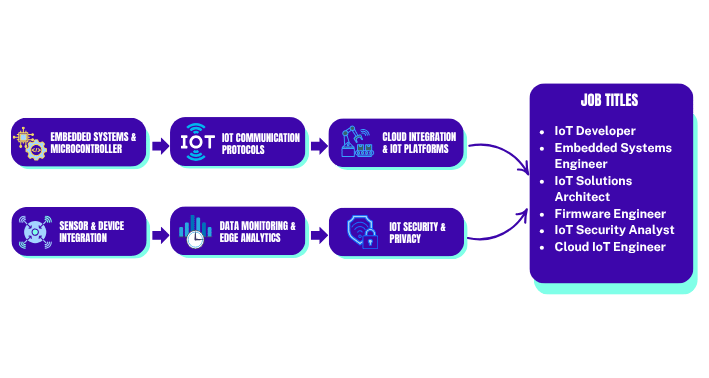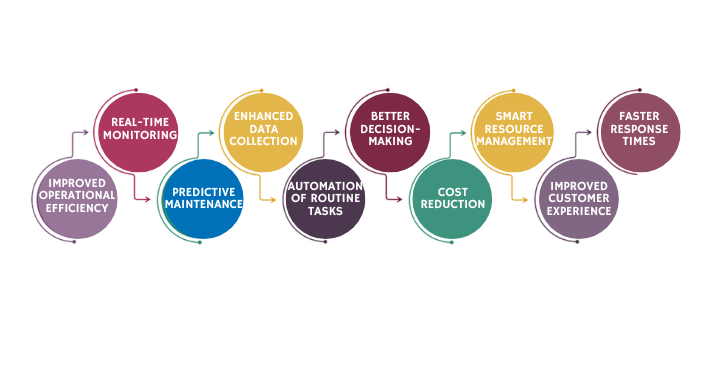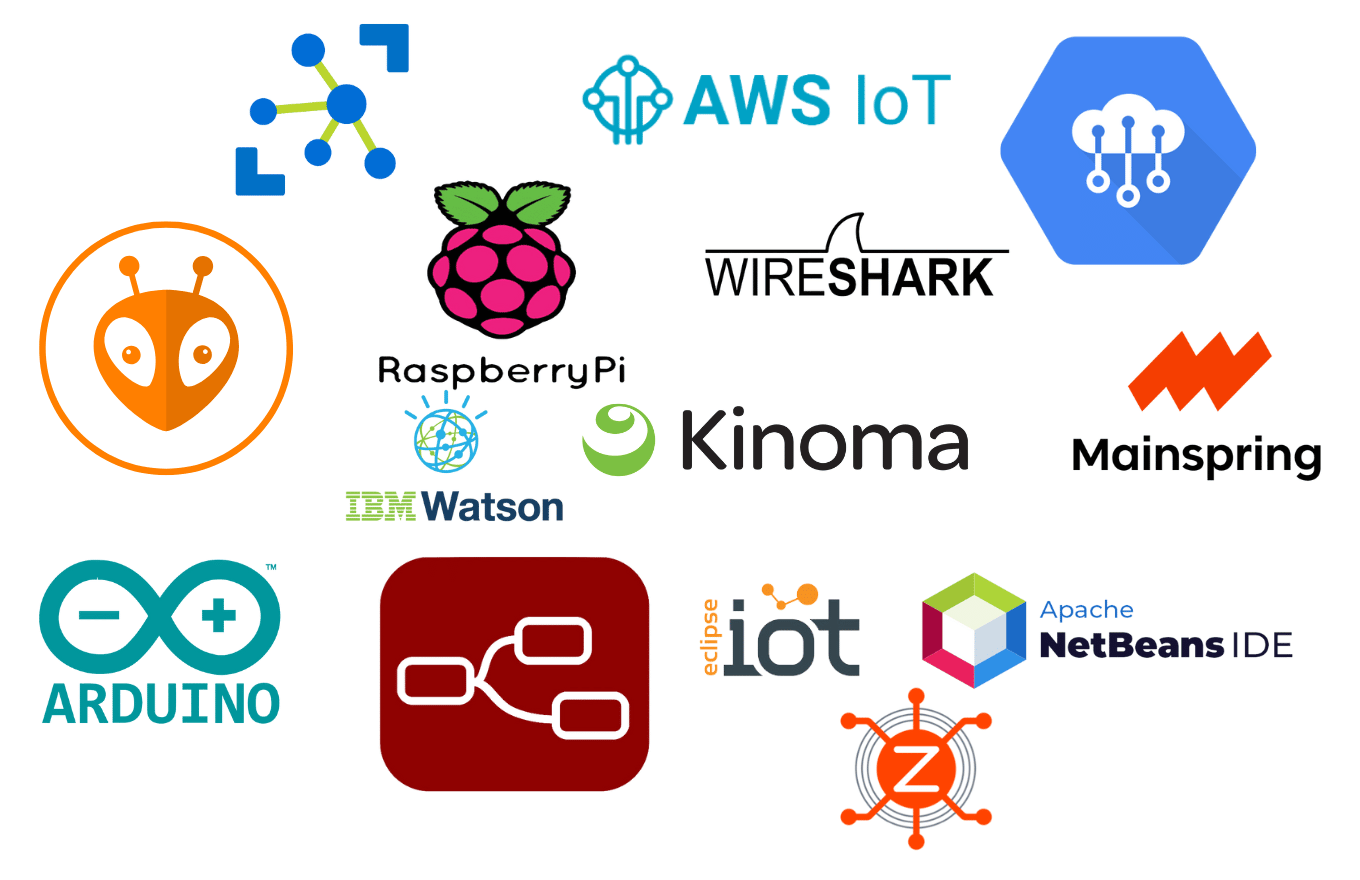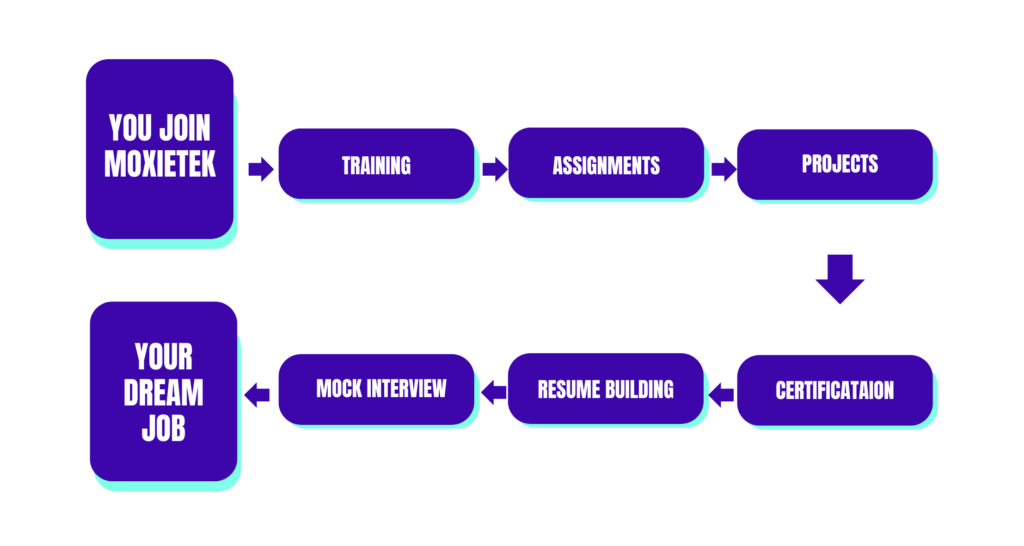Best Internet of Things (IoT) Certificate Course in Bhubaneswar
Equip Yourself for Prominent Global Certification Programs

Our IoT (Internet of Things) Certification Program in Bhubaneswar empowers learners to master the rapidly growing field of IoT, which is revolutionizing how devices connect, communicate, and transform industries globally. With a perfect blend of hands-on training, industry-relevant skills, and real-world project experience, this program equips you to build and deploy smart systems across domains like smart cities, healthcare, agriculture, and manufacturing. You’ll gain deep insights into IoT architecture, sensor integration, cloud platforms, and data communication protocols. Join our IoT training institute in Bhubaneswar to launch your career as an IoT Developer, Embedded Systems Engineer, or IoT Solution Architect, and lead the future of connected technology!
Who Should Take our IoT Course?
Our IoT (Internet of Things) Course In Bhubaneswar is perfect for anyone looking to build a rewarding career in the fast-evolving world of connected technologies. Whether you’re a student, a working professional aiming to transition into the IoT domain, or a tech enthusiast eager to explore smart systems, sensors, and automation, this course is designed for you. It offers a balanced mix of fundamental concepts and hands-on training in areas like IoT architecture, device integration, cloud connectivity, and real-time data processing. Tailored for both beginners and experienced professionals, our program equips you with the industry-relevant skills needed to design, deploy, and manage IoT solutions. If you aspire to become an IoT Developer, Embedded Systems Engineer, or Smart Device Specialist, or simply want to stay ahead in the world of smart technology and automation, this course will give you the tools and confidence to thrive.
Why IoT (Internet of Things) Is a Must-Have Skill in Today’s Connected Tech Ecosystem
Our IoT (Internet of Things) Course in Bhubaneswar is designed for learners who want to thrive in the rapidly expanding world of connected technology. As IoT transforms industries by enabling smart devices to communicate, analyze, and automate in real-time, professionals skilled in IoT, embedded systems, and cloud integration are in high demand. This course is ideal for students, working professionals, and tech enthusiasts who want to build careers in smart technology, automation, and real-time data systems. With hands-on training, project-based learning, and a career-focused curriculum, our program equips you with the expertise needed to build and manage IoT solutions. Join our IoT training institute in Bhubaneswar to become an IoT Developer, Embedded Engineer, or Smart Tech Specialist, and lead innovation in today’s connected world.

IoT Course Overview
Our IoT (Internet of Things) Course in Bhubaneswar is designed to help learners build a strong foundation in both the fundamentals and advanced applications of IoT technology. This program offers comprehensive knowledge of sensor integration, embedded systems, IoT architecture, cloud connectivity, and real-time data analytics. From connecting physical devices to building smart systems and automating processes, this course prepares you to lead in the rapidly evolving IoT ecosystem.
The program emphasizes hands-on learning with live projects, hardware simulations, and real-world case studies, allowing you to gain practical experience in developing IoT-based solutions for industries such as healthcare, manufacturing, agriculture, and smart cities. Whether you’re a student aiming to enter the tech industry or a professional looking to enhance your technical skillset, our IoT Certification Course in Bhubaneswar ensures you’re job-ready for high-demand roles in IoT Development, Embedded Systems Engineering, and Connected Device Management.
Tools Covered
Our IoT (Internet of Things) Course In Bhubaneswar covers essential tools and platforms that are crucial for building and managing smart, connected systems. You’ll gain hands-on experience with Arduino, Raspberry Pi, and ESP8266 for hardware prototyping, along with Python and C/C++ for device-level programming. The course also introduces MQTT and HTTP protocols for IoT communication, and platforms like ThingSpeak, Blynk, and Google Firebase for real-time data visualization and remote device control. These industry-relevant tools equip you to design, develop, and deploy IoT solutions across domains like smart homes, industrial automation, and healthcare—preparing you to thrive in the rapidly growing field of IoT and embedded systems.

Why MoxieTEK is the Best Choice for IoT (Internet of Things) Course in Bhubaneswar
Comprehensive Curriculum: Industry-aligned training covering IoT architecture, sensors, embedded systems, wireless communication, cloud integration, and IoT security.
Hands-On Learning: Real-world IoT projects, including smart device prototyping and data integration, to build practical skills.
Expert Trainers: Learn from professionals with years of experience in IoT development, embedded systems, and real-time applications.
100% Placement Assistance: Dedicated placement support to help you land roles in top tech companies and IoT startups.
Pay After Placement: Pay 50% of the course fee only after securing a job, making it a risk-free opportunity.
NASSCOM Certification: Earn a NASSCOM-recognized certificate, validating your skills and boosting your career profile.
Affordable Fees: Quality IoT training at competitive pricing, perfect for students, tech enthusiasts, and professionals.
Flexible Learning Options: Choose between online or classroom sessions based on your convenience.
Local Expertise: One of the most trusted IoT training institutes in Bhubaneswar, known for hands-on learning and placement success.
How MoxieTEK Guides You From Enrollment to Your Dream Job

IoT - Avg. Annual Salary
No Data Found
No Data Found
IoT (Internet of Things) Curriculum
- What is IoT?
- How is IoT applied in different domains?
- Use cases ranging from smart cites too IIoT?
- How large is IoT Market in different domains?
- IoT Technology stack
- Sensors & Actuators
- Hardware Platforms
- Wireless Communication Protocols
- Network communication Protocols
- Cloud, its components, IoT
- Data streaming in IoT
- Data store and IoT
- Analytics and visualization for IoT
- Fundamental of electronics circuits
- working principle of commonly used electronics components
- Practical application of Active and passive Components
- Designing of an electronic circuit
Practical :
- working with Resister, Capacitor, LEDs, voltage,regulators
- Designing an AC-DC Regulated power supply circuit
- What is sensor & Actuator?
- Sensor properties and their classifications
- Types of sensor and actuators
- working of typical Sensors and Actuators
- Categories of sensors: Commercial/Industrial/Military/Medical/Food grade sensor
- Selecting a sensor for your use case
- IoT Hardware Platform & comparison
- Criteria of selecting Hardware Platform
Practical:
- Getting familiar with various sensor
- Getting familiar with various actuators
- The Raspberry pi and Arduino Open-source Micro controller Platform.
- Raspberry pi and Arduino Board Layout & Architecture.
- Pin diagram & Description: Arduino U N O & Nano.
Practical:
- Downloading and Instillation of Arduino IDE
- Importing Libraries to Arduino IDE.
- Setup Arduino UNO with Arduino IDE
- Uploading the Arduino Sketch to Board and Testing
- Program to Read Analog And Digital data from Arduino
- Program to generate digital Output data from Arduino
- Reading data from analog/Digital Sensors
- Writing Data to analog (PWM)/Digital actuators
Practical:
- Interfacing analog sensors with Arduino
- Interfacing Digital sensors with Arduino
- Deming application of LED using PWM signal of Arduino
- Interfacing Sensor and Actuators with Arduino
- Receiving input and Generating Output in Serial Monitor in Arduino IDE
- Interfacing sensor to Arduino to Read data from the sensor and display it on a serial ,monitor (Temperature,Humidity,Distance,Light,Moisture,Gas(methane/Alcohol),Proximity,Motion)
- Interfacing actuator to Arduino and controlling Actuator (LED,Relay,Push Button,Buzzer)
- Controlling a DC motor (actuator) by sensing the Environmental Temperature
- Obstacle detection system (Combining sensor to avoid false alarms)
- Moisture sensor based automatic soil irrigation system using Relay
- Working with Raspberry Pi 3 B.
- Installing OS and Designing System using Raspberry Pi.
- Configuring Raspberry Pi for VNC connection.
- Getting introduced to Linux OS.
- Basic Linux commands and uses.
- Getting started with Python.
- Variables,Function and Control Structure.
- File Handling in python & Importing or Exporting Data.
Practical:
- interface Digital Sensors with Raspberry Pi.
- GPIO functions in Raspberry Pi.
- Controlling a Relay using Raspberry pi.
- Controlling a DC motor using Raspberry Pi.
- Introduction to ESP 32 Boaed.
- ESP32 pinout Description.
- Configuration ESP32 board in Arduino IDE.
- Uploading Programs to ESP32 using Arduino IDE.
Practical:
- Interfacing Analog/Digital Sensor with ESP32.
- Controlling Actuators from ESP32.
- Wi Fi,GSM/GPRS,2G,3G,LTE
- Comparison of Communication Channels.
- How to select Communication Channels based on Use Case.
Piratical:
- Interfacing GSM/GPRS Module with Arduino.
- MQTT/MQTTS, CoAp,6LoWPAN,TCP,UDP,HTTP/s
Practical:
- Establishing MQTT communication using ESP32.
- How to select a Network Protocol Based on the Use Case.
- Issues with IPv4 in IoT.
- How IPv6 solves the issue with IPv4.
- Application issue with RF protocol.
- Power consumption,LOS,reliability,and Security aspects.
- Introduction of TCP & UDP.
- Difference between TCP/UDP Transport Protocol.
- Practically testing the TCP v/s UDP by python socket Programming.
- Introduction and structure of HTTP protocol.
- Start with HTTP protocol GET/POST method.
- work on python Flask library design web page.
Practical:
- Control things from the web page using the HTTP protocol.
- Publish sensor data over the web server.
- Introduction to MQTT.
- Why MQTT?
- Features of MQTT.
- MQTT Subscribe/Publish
- MQTT Broker.
- MQTT QoS.
- MQTT Security.
- Installation of Mosquito MQTT broker.
- Publish and Subscriber test on local server broker.
- Start with Paho MQTT.
- Publish/subscribe test on IoT.eclipse platform.
- Introduction of CoAP.
- Architecture of CoAP IOT protocol.
- Difference between HTTP & COAP.
- Implement CoAP using the CoAPthon Python library.
- Design server and client using Python.
- Read data from sensors,
- Create JSON Object.
- Establish HTTPS connection using Wi-Fi.
- Send JSON data to Ubidot Rest API over HTTPS.
- Create business rules in Ubidot for alarms.
- Send Data to Ubidot platform.
- Create rule and configure Alarm(SMS/Email) for your device.
- Send data to Ubidot, which will trigger the alarm.
- Create and configure Chart/Graph for visualization.
- Control the actuator from Ubidot using a polling technique.
- What is cloud?
- What is cloud computing?
- Benefits of cloud.
- Deployment Models.
- Top cloud providers.
- Service Models.
- Service Catalogue.
- Advantages for different offerings.
- Introduction to AWS.
- Service provided by AWS E2C, SimpleDB RDS, Dynamo DB, Elastic Beanstalk, SNS, Cloud Watch, Route 53, VPC, Elastic Load Balancing, S3, EBS, IAM.
- Introduction to AWS IoT.
- Creating a Thing in AWS IoT.
- Downloading SDK and configuring Raspberry-pi.
- Downloading Certificates from AWS IoT console
- Installing certificate in Raspberry-pi
- Connecting Sensors to Raspberry-pi II.
- Configuring Raspberry-pi sketch to connect to AWS IoT through Wi-Fi.
- Establishing MQTT Connection.
- Publishing Sensor data to AWS IoT Thing Shadow.
- Subscribing MQTT Topic and controlling actuator from Thing shadow.
- Run Ultrasonic ranger sketch in Raspberry-pi and check.
- Updating of data from Raspberry-pi to AWS Thing Shadow.
- Configuration of Dynamo DB.
- Create table in Dynamo DB.
- Create rule link dynamo DB with AWS IOT.
- Store sensor data From AWS IOT in Dynamo DB.
- Setup SNS service.
- Test SNS service by publish/subscribe.
- Create a rule and link with AWS IOT.
- Notify through mail when Publisher publish data.
Address
Phone: +91 70777 04010

